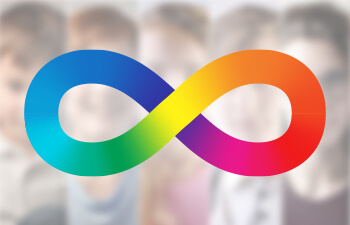For some families, March 14 can seem like just an ordinary day. For others though, 3/14 is much more than that. In fact, it’s a day to celebrate the mathematical constant we all remember learning in middle school, which is Pi! As a refresher, Pi is the ratio of a circle’s circumference to its diameter. The number starts with 3.14 and has 31 trillion known digits, but continues on infinitely!
Why is Pi Day Important?
While Pi Day is the day that mathematicians celebrate Pi and all the innovations it has contributed to, it has evolved to become a cultural phenomenon. In 2009, Pi Day became a national event, recognized by the House of Representatives through Resolution 224. The day is also officially recognized to create more awareness and excitement around the STEM subjects. Pi has been used as far back as 4,000 years ago and has since been used by NASA for supercomputers and to send spaceships to outer space.
Fun Facts About Pi
Pi is a unique number to the world of mathematics for many reasons! Here are just a few.
- The first 25 digits of pi (the first 24 decimal places) are 3.14159265358979323846264.
- The name Pi comes naturally from the Greek letter π, and was taken from the first letter of the Greek word perimetros, meaning “circumference.”
- Pi is an irrational number, which means it cannot be expressed as a fraction.
- The infinite digits in its decimal representation also never settle into a repeating pattern.
- Contrary to popular belief, the decimal presentation of Pi may not contain every possible number combination in its digits.
Pi Day Activities
The use of Pi has aided in the advancement of civilization, and it would be difficult to imagine where we would be without it. Celebrate the number with these Pi Day activities!
Elementary/Middle School Level Pi-Day Activities
- Bake a Pi(e)! To make this a part of your Pi Day math activities, calculate the area and circumference of the pies you make! For circumference, the formula is 2 x π x r, with r being the radius of the pie. The radius is half the diameter of the pie. For area, the formula is π x r2. Grab a calculator, plates, and your baking ingredients. Don’t forget to have fun!
- Easy: pumpkin pie recipe
- Intermediate: apple pie recipe
- Advanced: pizza from scratch – yes, pizza counts as pie!
- Watch (or read) the story of Sir Cumference and the Dragon of Pi! This fun and educational story provides students young and old with a way to learn about Pi. Have your child write a short summary or report of what they learned from the story.
- Create a Pi Day decoration and visualize Pi by making a paper chain or necklace., Represent each digit from 0-9 with its own color, and link them together in order of the first 20 digits of Pi. For instance, blue paper can be for all “1” digits, pink for all “2” digits, and so on.
- Make a bar graph for Pi. Tabulate the first 20 digits of pi, and create a bar graph. Your student may notice that this bar graph resembles a city skyline. Observe: Are any of the buildings the same height? What happens as you continue with more digits of Pi?
- Use each digit of Pi as the number of letters in a word to create a story! For instance, a story would begin with a three-letter word, a one-letter word, and then a four-letter word. Allow creativity to fly, and see how far your students are willing to go.
- Create a Pi-poem! Each digit of Pi can represent the amount of syllables a line can contain. For instance, a three-line Pi-poem would be three syllables, one syllable, then four syllables. Have your student create a poem with as many lines as their age!
- Create a list of all the words you and your student can think of that start with “Pi.” For added educational fun, skim through the dictionary once your student has run out of words to come up with. What’s the most interesting word you found, and what does it mean?
- Since Pi has so many digits, many people’s birthdays (yes, day, month, and year!) can actually be found in its many digits. See if your child can spot his or her birthday. If not, there’s a website to find your birthday in Pi’s digits!
- How commonly is Pi Day observed? Take a trip to your local stores, pizza restaurants, and bakeries to see if there are any special deals. If there are, see if you can calculate exactly what the price difference is between normally priced pies (or pizzas) and discounted ones.
- March 14th may be known as Pi Day, but what other special events and occasions have occurred on March 14th? Conduct a historical search with your child to determine the most exciting or interesting event that has ever occurred on March 14th. For older students, you can assign a paper or project on the topic.
- Take to the web to find some fun Pi Day worksheets! There are many free printables across the Internet to enhance your learning experience on the day.
- Hold a spelling test for younger students using words that begin with “pi.” Read out the words below and see if your child is able to spell them correctly
- piano
- pillow
- pillowcase
- picture
- pills
- pipe
- pinball
- pitcher
- pinata
- pilot
- pixie
- pigeon
- pike
- pika
- piranha
- pineapple
- pink
- pine
- pies
- pilgrim
High School Level Pi-Day Activities
Here are some high-school-level geometry, precalculus, and statistics concepts that fit perfectly into Pi-Day!
Pi-Day Activities for Geometry and Trigonometry Students
- Pi’s definition takes place in Euclidean geometry, but what about in non-Euclidean geometry? What is non-Euclidean geometry? Which notions of Euclidean geometry does non-Euclidean geometry ignore? Hint: it has to do with the idea of things being parallel!
Pi-Day Activities for PreCalculus Students
- Did you know there are many ways to reach infinity? This concept relates directly to rates of change and limits. Have your student research modes of infinity, and present their findings. Answer the question: between (x2) and (x3), which would approach infinity faster?
- The notion that an infinite, non-repeating decimal must contain all possible number combinations is NOT true. Create a counterexample to prove it– create the rules for an infinite, non-repeating decimal that does not include all possible digits.
Pi-Day Activities for Statistics Students
- The digits of π have no apparent pattern and have passed tests for statistical randomness, including normality. What does that mean? Can you create a 12-digit number that IS statistically random? How about a 10-digit number?








This is so helpful! I’ve been wondering how to approach Pi Day with my 6 YO.
Thanks so much for stopping by, Lesli! We’re thrilled to be a resource for your family! 🙂